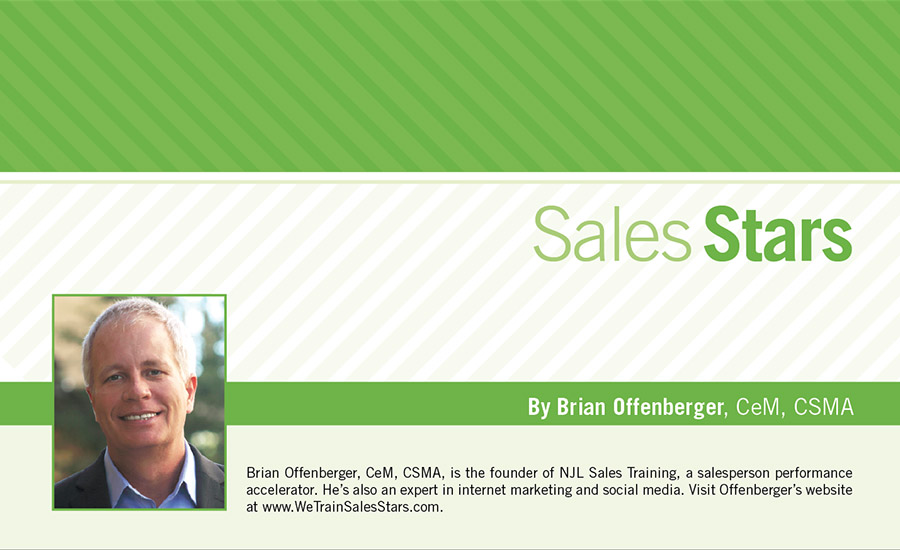“Just send me some information.”
“I don’t have time for this; call me next month.”
“We already work with (insert competitor’s name).”
For any security sales professional that prospects for new business, these objections sound familiar. They come from people that don’t yet see value in working with you. If you want to make big bucks in selling, then you must overcome these objections and move prospects to the next step.
So, when faced with these objections, you must express value early and succinctly.&
You can eliminate a lot of objections simply by respecting the prospect’s time. Explain what you want early in your outreach. Every email, text, voice mail and phone call should lead with a statement that you’ll be quick, followed by a short (one or two lines or 30 seconds or less) prospect-centric customized value proposition.
The goal of most prospecting is to arrange a meeting with the customer. Sure, the purpose of the meeting is to lead to a sale but, in most instances, you won’t have a sale without first having the meeting. Stay away from product conversations. If the prospect asks a product question, recommend you set up a time to cover that in your next meeting.
The Big 3 Prospecting Objections:
1. The Send Away
What the prospect says: “Send me some information.”
This salesperson-killer can come up before you’ve had a chance to explain what you do and your value proposition. If it happens then, the prospect is trying to get rid of you — it’s the big cold shoulder. If it happens after you’ve asked some qualification questions, the prospect may have some interest but isn’t willing to commit to a meeting. No matter when it happens, a salesperson must find out the reason for the statement. Does the prospect not yet understand the value, or are they not yet ready for a meeting?
Responses:
- Before you’ve delivered the value proposition: “Can we take 30 seconds now for me to explain what we do, so I give you the most relevant information?”
- Before qualification: “Let me ask you a couple of questions so I best know how we can help you.”
2. The Filibuster
What the prospect says: “I’m busy now. Call me in two months.”
Who isn’t busy? Most people will push off to tomorrow what should be done today. Don’t let them. Reassure them that this is not a buying conversation; you simply want to show them what you do so they can see if there is value in it for them.
Response: “If the timing now is really bad, of course I’d be happy to contact you then. However, I’d still like to set up a five-minute call to explain what we do to see if it would bring value to you. That way, if it’s not interesting, I’m not emailing you for a meeting, but if it is something of value, we’ll have more to talk about it then. When can you take five minutes on the phone with me?”
3. The Rival
What the prospect says: “We already work with (insert competitor name).”
If you don’t understand how you are unique from your competition — and can’t explain that difference clearly — then this objection will stall your earnings. When a prospect uses this objection, they don’t see how you bring value in ways different from their present vendor.
Response: “I’m not asking you to rip anything out. A lot of our customers used to use competitor. And some still do. I just want you to know how we are different and how we provide even greater value to our customers. I can show you some use studies and references from companies that work with us and competitor. When is a good time for a five-minute call?"
When to Quit
The purpose of this article is to give salespeople responses they can use to the reactionary objections prospects give without really thinking. Sometimes, however, no means no. If you’ve done your job and still hear no, let it go. You can’t force people to buy, and you don’t want to waste time. If they say the objection twice, it’s probably real and time to move on.




